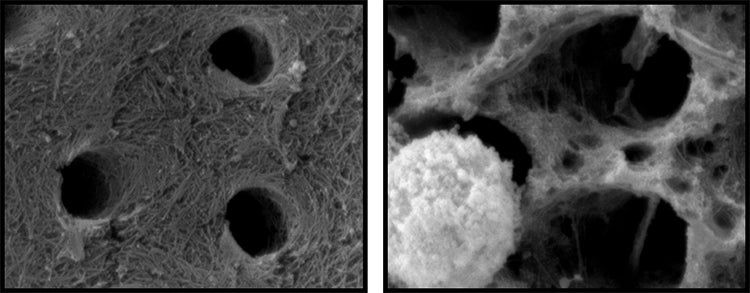U of T research finds body's immune system is potential culprit in causing cavities, damaging fillings

Published: April 11, 2019
A new study by researchers at the University of Toronto’s Faculty of Dentistry provides the first evidence that the body’s own defence system could be a major contributor to tooth decay and filling failure.
Published in biomedical journal Acta Biomaterialia last week, the study shows that the decay of dentin (that hard substance beneath the tooth’s enamel) and fillings is caused not just by bacteria alone – as has been the model understood by science for decades – but through the unique activity of oral immune cells known as neutrophils, which potentially enhance the effects of bacteria.
“No one would believe that our immune system would play a part in creating cavities,” says Associate Professor Yoav Finer, the lead author of the study and the George Zarb/Nobel Biocare chair in prosthodontics at the Faculty of Dentistry. “Now we have evidence.”
Recognized as important players in combating inflammation in all parts of the body, neutrophils are a type of short-lived innate immune system cell that enter the oral cavity from the gums around the roots of the teeth.
When bacteria invade the oral cavity, the body sends out neutrophils to attack. But as the neutrophils track down and destroy the invading bacteria, they may cause destruction to the localized environment as well as to the bacteria.
“It’s like when you take a sledgehammer to hit a fly on the wall,” Finer says. “That’s what happens when neutrophils fight invaders.”
It’s not just the force of the neutrophil invasion, however, but the byproducts of the attacks that cause the damage.
On their own, neutrophils are incapable of causing damage to the teeth, explains Finer: “They don’t have acid, so they can’t do much to mineralized tooth structures.”
But when neutrophils engage in attack, the acids produced by the oral bacteria demineralize the tooth. That’s when enzymes from both the immune cells as well as their targets rapaciously eat through teeth, and can also cause collateral damage to tooth-coloured fillings.
And it’s a speedy process: “Within hours,” the researchers found, dentin and tooth-coloured fillings sustain damage.
“It’s a collaboration of destruction – with different motives,” says study author Michael Glogauer, professor at the Faculty of Dentistry and acting chief dentist at the Princess Margaret Cancer Centre.
Corroborating previous studies conducted by the group, the research could also explain why so many patients whose caries are treated with tooth-coloured fillings face high rates of recurrence of the disease. Most tooth-coloured fillings fail within five to seven years, costing Canadians an estimated $3 billion a year.
"Ours is the first basic study to show that neutrophils can break down resin composites (tooth-coloured fillings) and demineralize tooth dentin,” says master's student and first author of the paper, Russel Gitalis. “This suggests that neutrophils could contribute to tooth decay and recurrent caries.”

Collagen after incubation with neutrophils for 24 hours: Image at right depicts a loss of collagen fibril network when incubated with neutrophils (courtesy of Russel Gitalis)
Gitalis hopes the study will lead to new assessments for caries risk and treatment strategies.
While the study provides the first direct evidence that an immune response may contribute to tooth decay, it also opens up new avenues for research.
“We can develop new methods to prevent immune-mediated destruction of teeth,” says Glogauer.
The findings may also one day lead to new standards for testing filling materials, says Finer, who argues that materials need to face trial within the collaborative destruction lab to pass muster.
“We need to test interactions with the body and bacteria,” he adds.
The research was supported by the U.S. National Institutes of Health, the Canadian Institutes of Health Research, the Canada Foundation for Innovation and the Ministry of Research and Innovation's Ontario Research Fund.


